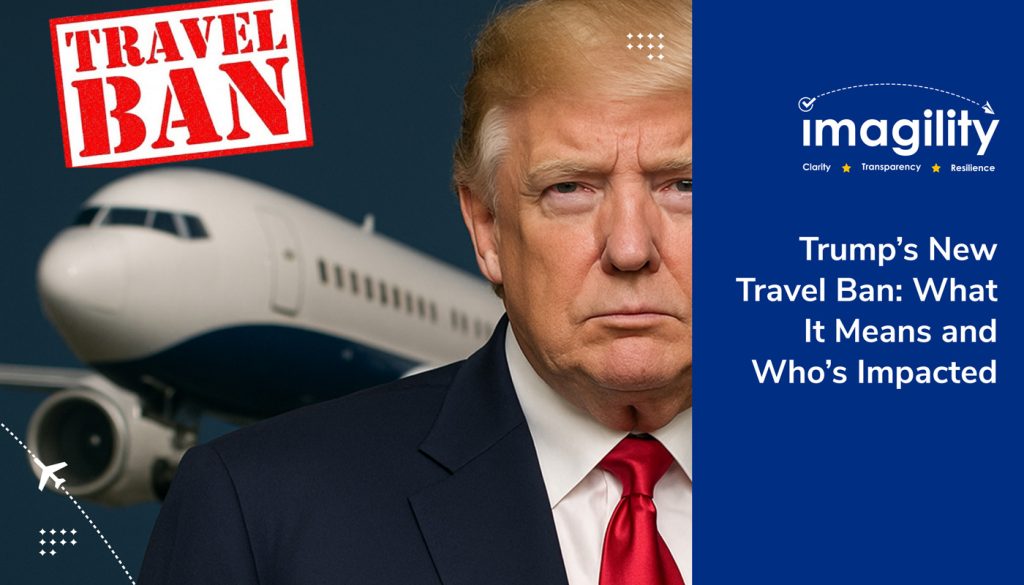A new travel ban announced by President Donald Trump is set to affect millions of people across the globe. The policy, which goes into effect on Monday, June 9, 2025, blocks or limits U.S. visa access for citizens of 19 countries with 12 countries facing a complete suspension of travel and seven more seeing partial restrictions.
If you, your family, or your employees are from one of these countries, here is a breakdown of what this means for you.
Who’s Affected by the New Ban?
The order divides countries into two categories based on the severity of restrictions:
Fully Banned Countries
Citizens of these 12 nations will be denied all types of U.S. visas, including tourist, student, work, and immigrant visas:
- Afghanistan
- Myanmar (Burma)
- Chad
- Republic of Congo
- Equatorial Guinea
- Eritrea
- Haiti
- Iran
- Libya
- Somalia
- Sudan
- Yemen
If you are from any of these countries, you are barred from entering the U.S. regardless of your visa type.
Partially Restricted Countries
These 7 countries face selective visa limitations. Citizens will no longer be eligible for B-1/B-2 (tourist/business), F, M, or J (student/exchange) visas:
- Burundi
- Cuba
- Laos
- Sierra Leone
- Togo
- Turkmenistan
- Venezuela
Some other visa categories (like work visas) are still available, but consular officers have been instructed to shorten the length of those visas whenever possible, making long-term stays harder.
What’s Different From the 2017 Travel Ban?
You might remember the chaos caused by the 2017 travel ban, which was met with legal battles and mass protests. This new version is more structured but also more expansive.
Key differences include:
More countries: This ban covers more regions, particularly Africa and the Caribbean.
Stronger justification: The administration claims the list was created based on data about visa overstays, lack of identity verification systems, and poor deportation cooperation.
Pre-planning: This time, the government provided advance notice, reducing the chance of confusion at airports.
How This Affects You
If you are from one of the 19 countries listed, here is what you need to know:
Visa restrictions start on June 9, 2025. After this date, embassies will stop issuing the affected visas. If you already have a valid visa or green card, you can still travel to the U.S., but you might face stricter screening at the border.
Visa extensions or renewals could be denied especially for tourists, students, and family-based immigrants.
Some exceptions will apply, including:
- Diplomatic travel
- Special Immigrant Visas
- Adoption cases
- Immediate family reunification (with proper documentation)
It’s also important to note that asylum and refugee programs are not directly affected by this order but they continue to face restrictions under other policies.
Final Thoughts
This new travel ban marks a significant shift in U.S. immigration policy, impacting individuals, families, students, and professionals across 19 countries. Whether you are planning a trip, hoping to study or work in the U.S., it’s more important than ever to understand how these changes could affect your plans.
If you are from one of the affected countries, don’t panic. Check the latest visa guidelines, gather the necessary documentation, and consult an immigration attorney if you are unsure about your eligibility or options. Planning ahead can help you avoid delays or complications.










